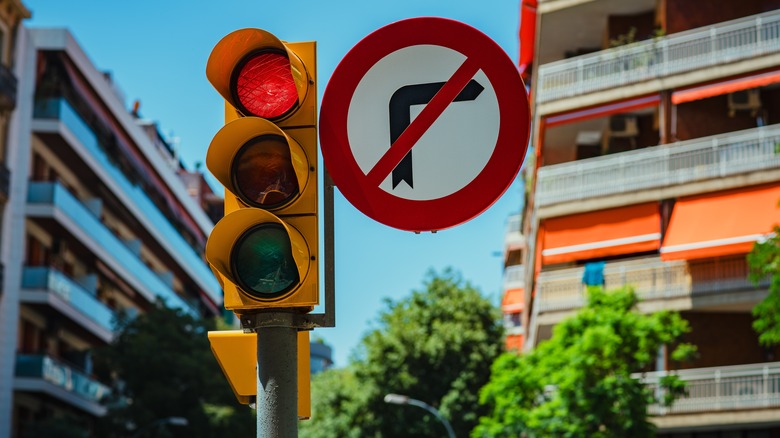Preparing for road trips, particularly lengthy ones, entails a number of considerations. For one, it’s important to pack safety items, like jumper cables and a first-aid kit, so you can easily get yourself out of sticky situations. For another, it’s crucial that you budget for preemptive car maintenance to ensure that your vehicle is road-trip-ready and minimize the risk of running into technical issues mid-journey. Equally important is familiarizing yourself with the traffic laws of every state, especially if you’re embarking on a cross-country drive. While many traffic laws are standardized across the country, certain regulations vary from state to state.
One noteworthy change in traffic regulations involves the decades-old right-turn-on-red rule (RTOR), with a growing number of places across the U.S. banning the practice. Apart from New York City, where it has long been restricted, Seattle, Washington, Ann Arbor, Michigan, and Cambridge, Massachusetts, have followed suit, in an effort to bolster road safety. Meanwhile, Washington D.C. passed a bill to ban it starting in 2025; and major cities across the country, including San Franciscoand Denver, may also impose similar restrictions in the foreseeable future. You may be accustomed to yielding and turning right on red in your home city, but remember that it’s not permissible in certain regions. While you’re doing the necessary preps for your road trip, make sure that you’re well acquainted with these changes for a journey void of legal complications.
Why are some cities banning right-turn-on-red?

It may be surprising to some that the right-turn-on-red practice is not universally adopted. The United States is one of the only countries to have imposed such a rule, and it was only brought about during the 1970s oil crisis when the government was pulling all the stops to mitigate fuel shortages. Fast forward to today, some states are changing their tune due to a concerning increase in accidents involving pedestrians and bicyclists. In 2022 alone, 7,508 pedestrians were killed while navigating the streets, marking the highest fatality rate since 1981, per the Governors Highway Safety Association.
What’s interesting is that despite the initial assumption that it can help with fuel conservation, RTOR has been found to be less effective in reality. “The savings in emissions and travel times has always been wildly overstated because it never assessed the reality that most of these drivers are immediately stopped at a signal on the cross street or stuck in traffic in urban areas,” transportation engineer Bill Schultheiss told Mother Jones. “The total trip of the user was never part of the assessment.”
While some argue that pedestrian accidents related to RTOR mostly result in minor injuries, Senator John Lovick, a strong proponent of the bill to ban it, emphasized that they shouldn’t happen in the first place. “One injury or death is too many,” he said per Associated Press. “If it were me at that intersection crossing, I would want something done.”

